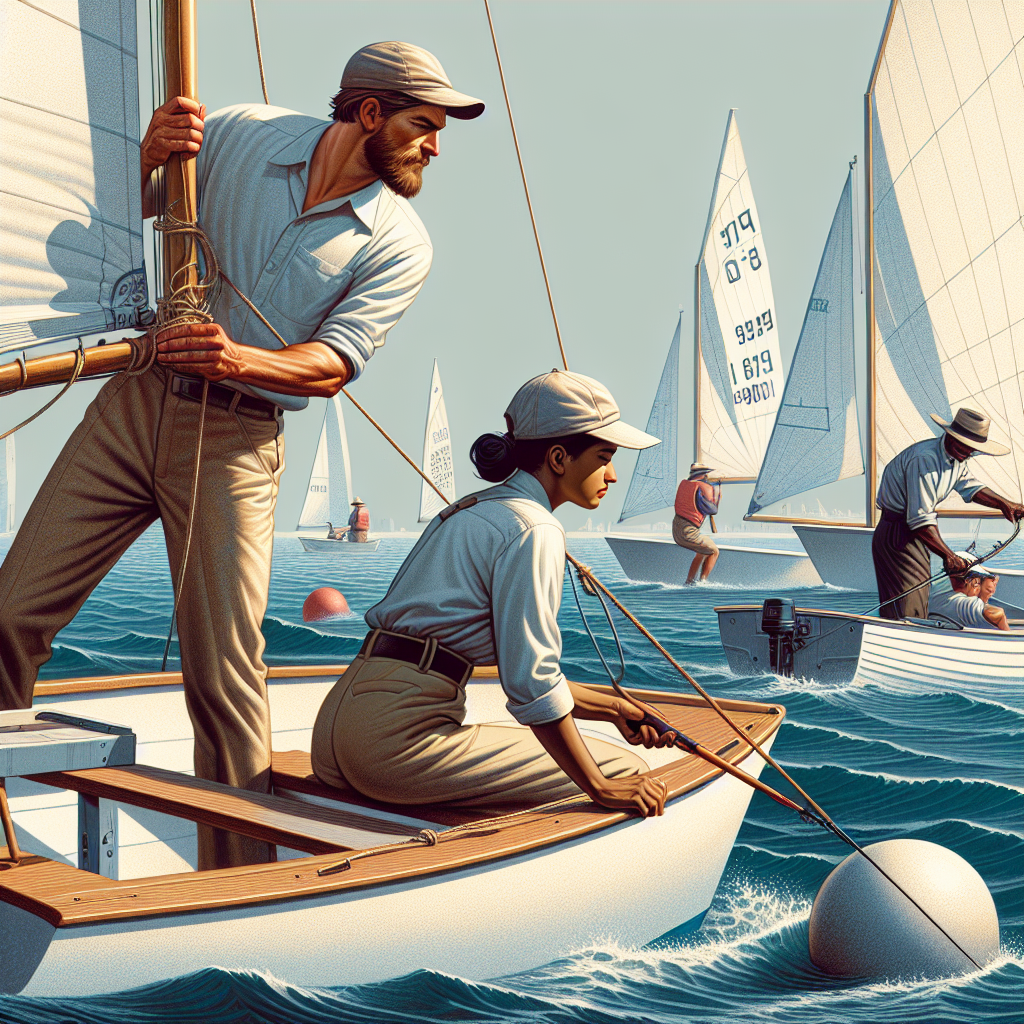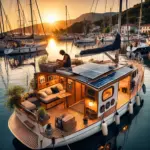
Boating is not just a fair-weather hobby; it’s a year-round passion for many. With each season’s unique characteristics, you’ll need to adapt your strategies to ensure you can enjoy the water whenever you wish. So, whether you’re prepping for a peaceful autumn cruise or gearing up for the vibrant summer season, here’s how to make the most of your time on the water, any time of the year.
Article-at-a-Glance
- Spring calls for a pre-sail checklist and adaptable plans for sudden weather shifts.
- Summer boating demands sun protection and vigilance for fast-forming storms.
- Autumn on the water means layering up and being mindful of wildlife migrations.
- Winter boating is all about dressing for the cold and being prepared for rapid weather changes.
- Maintaining a year-round safety mindset and having the right gear is crucial for any season.
Year-Round Preparation Is Key
Before we dive into the specifics of seasonal boating, remember that some strategies are universal. Regular maintenance of your boat is essential, no matter the time of year. A well-maintained boat is a safe boat, and safety is the priority in all weather conditions. Also, continuously educating yourself on boating safety and navigation will serve you well. The more you know, the better you can react to any situation the weather throws at you.
Most importantly, always respect nature’s power. Weather can be unpredictable, and water conditions can change in the blink of an eye. A healthy respect for these elements will keep you alert and ready to act when necessary.
Understanding Your Weather Window
Checking the weather forecast is a must before any boating trip. But beyond just a cursory glance, you need to understand what you’re looking for. Changes in wind speed, direction, and sudden temperature drops can all indicate that you’re in for a rough ride. Keep a weather radio handy and know how to interpret the information it provides. This knowledge can be the difference between a great day out and a troublesome one.
Spring Sailing: Dodging the Gusts
Pre-Sail Checklist for a Fresh Start
Spring is the season of renewal, and that means giving your boat a fresh start too. Begin with a thorough inspection of both the interior and exterior of your boat. Look for any signs of damage that winter may have left behind and address them before setting sail. This is also the perfect time to check all safety equipment, from life jackets to fire extinguishers, and make sure everything is in working order.
Adapting to Unpredictable Elements
Spring weather can be a mixed bag. One minute it’s sunny, and the next, you’re caught in a rain shower. Because of this, always dress in layers. This way, you can easily adjust to whatever the day brings. Be mindful of melting snow and ice as they can lead to higher water levels and potential debris. Navigation during spring requires extra caution, but it’s nothing you can’t handle with a watchful eye and a prepared mind.
Besides that, the spring season is a time to reacquaint yourself with your boat and the water. Take it slow on your first few outings to ensure you and your boat are in harmony with the changing conditions.
Staying Afloat Amidst Peak Boating Traffic
When summer hits its stride, the waterways become bustling with activity. This is the time to be extra vigilant, especially in popular spots where boats, jet skis, and swimmers all share the water. Always keep a proper lookout and maintain a safe speed. Remember, the rules of navigation are not just guidelines; they’re there to keep everyone safe on the water.
Fall on the Water: Navigating the Tranquil Challenge
As the leaves begin to change color, boaters are treated to some of the most beautiful vistas of the year. However, with beauty comes the challenge of cooler temperatures and unpredictable weather. Fall boating is about preparation and enjoying the serenity of less crowded waters.
First, keep an eye on the weather patterns. Fall can bring quick temperature changes and sudden gusts of wind. You’ll want to ensure that your boat’s lighting is in working order as the days get shorter and that you have the necessary navigation aids to deal with the early onset of dusk.
Another point to consider is the water temperature, which can drop quickly. If you’re in a region where the water gets particularly cold, hypothermia can become a risk. Always dress appropriately and have a change of dry clothes on board, just in case you get wet.
Layering Up for the Autumn Chill
When it comes to dressing for autumn boating, think layers. A moisture-wicking base layer, followed by an insulating layer, and topped with a waterproof outer layer will keep you warm and dry. This strategy allows you to add or remove layers as conditions change throughout the day. And don’t forget a warm hat and gloves – much of your body heat is lost through your head and hands.
Wildlife and Water Levels – Fall Considerations
Autumn is also a migratory season for many species. This means you might encounter more wildlife activity around waterways. It’s a good idea to familiarize yourself with the local wildlife schedules to avoid disturbing their patterns. Additionally, water levels can fluctuate in the fall, with some areas experiencing lower levels that can expose hazards. Adjust your boating routes accordingly and always keep an updated chart on hand.
Also, with the leaves falling, there’s an increased chance of debris in the water. Regularly check your vessel’s intakes and clear away any obstructions to prevent overheating and damage.
Embracing the Chill: Winter Boating Like a Pro
Winter waters are not for the faint of heart, but they offer a unique boating experience for those willing to brave the cold. The key to winter boating is to dress for immersion. Even if you don’t plan on getting wet, you should be prepared for the possibility. A dry suit or wetsuit can be lifesavers in cold water conditions.
Dress Right to Fight the Frost
Insulating layers are your best friends during winter boating. Opt for materials that retain warmth even when wet, like wool or synthetic fibers. Pay close attention to your extremities; thick socks, waterproof boots, and insulated gloves are essential. A warm hat or balaclava will protect your head and neck from the biting cold.
Necessary Gear for Ice-Cold Expeditions
Your boat needs to be equipped for the colder weather too. Ensure that your heating system is working properly and that you have a means of breaking ice around your boat if necessary. Your safety kit should include items that can aid in hypothermia prevention and treatment, such as thermal blankets and hot packs.
Most importantly, winter boating requires a heightened awareness of the weather. Check forecasts regularly and be prepared to change your plans if conditions deteriorate. Keep communication lines open and let someone onshore know your itinerary and expected return time.
24/7/365: The Common Thread of Safety
No matter the season, safety is the common thread that ties all boating experiences together. The water can be as unforgiving as it is beautiful, so a boater’s first priority should always be the wellbeing of themselves and their passengers.
Essential Gear for Any Weather
There are certain items that you should always have on your boat, regardless of the season. A well-stocked first aid kit, life jackets for all passengers, a means of communication such as a VHF radio, and emergency flares are non-negotiables. Additionally, always have an anchor and know how to use it. It’s your best friend if you need to stay put in an emergency.
It’s also wise to carry a multi-tool or a basic tool kit for on-the-spot repairs. You never know when a small fix could prevent a bigger problem down the line.
Mastering Emergency Protocols
Knowing what to do in an emergency is as important as having the right gear. Make sure you and your passengers understand basic emergency procedures, like how to use the radio to call for help, how to don life jackets quickly, and how to signal distress. Regularly review and practice these protocols so that they become second nature.
Boating Through Seasons: The Ultimate Checklist
Finally, let’s put it all together with a checklist that will guide you through the seasons. For each season, there are specific actions you can take to ensure you’re prepared for whatever conditions you might face.
Spring Readiness – From Melting Ice to Blooming Waters
As the ice thaws and the waterways open up, ensure your vessel is ready for spring. Here’s what you need to focus on:
- Inspect your boat thoroughly for any damage from winter storage.
- Test your battery and electrical systems.
- Check fluid levels and replace as necessary.
- Verify that your bilge pumps are operational.
- Review your safety gear, ensuring everything is up to date and functional.
Summer Survival – Sunscreens to Storm Plans
Summer is all about long days on the water, but the sun and sudden storms pose their own risks:
- Apply sunscreen and wear protective clothing to guard against UV rays.
- Stay hydrated by keeping plenty of water on board.
- Have a plan for quickly seeking shelter if a storm rolls in.
- Keep an eye on the water traffic to avoid collisions in busy areas.
- Ensure your navigation lights are working for those late evening returns.
Autumn Adjustments – Pre-Winter Preparations
The air gets crisper and the water quieter, but autumn’s beauty comes with a chill:
- Layer your clothing to stay warm as temperatures drop.
- Be aware of migratory birds and other wildlife.
- Monitor water levels and watch for submerged obstacles.
- Prepare your boat for the end-of-season maintenance.
- Keep an eye out for early frosts and have a de-icing plan.
Winter Wisdom – The Essentials for Freezing Temps
Winter boating isn’t for everyone, but if you’re up for it, make sure you’re prepared:
- Dress in waterproof and insulated gear from head to toe.
- Check weather conditions obsessively and plan for the worst.
- Carry emergency supplies like thermal blankets and hot drinks.
- Ensure your boat’s heating system is in good working order.
- Understand ice navigation and have the necessary tools on hand.
Frequently Asked Questions (FAQ)
Now that we’ve covered the seasonal strategies, let’s address some common questions boaters might have:
How do I prepare my boat for the changing seasons?
To prepare your boat for the changing seasons, perform regular maintenance checks, update your safety gear, and adapt your clothing and equipment to the weather. For instance, ensure your heating system is ready for winter, and your cooling system is prepped for summer.
What should be included in my all-weather safety kit?
An all-weather safety kit should include life jackets, a first aid kit, a VHF radio, emergency flares, a multi-tool, a fire extinguisher, a flashlight, extra batteries, and thermal blankets. Tailor additional items to the season, such as sunscreen for summer or a de-icing tool for winter.
How can I stay informed about weather changes while boating?
To stay informed about weather changes while boating, check the local forecasts regularly, download a reliable weather app, and carry a weather radio on board. Always look for signs of changing weather, like darkening clouds or shifting winds, and be ready to adjust your plans accordingly.
Is boating safe during winter?
Boating during winter can be safe if you’re well-prepared. This means having the right clothing, equipment, and knowledge of the conditions you might face. It’s crucial to understand and respect the added risks of cold water and weather.






